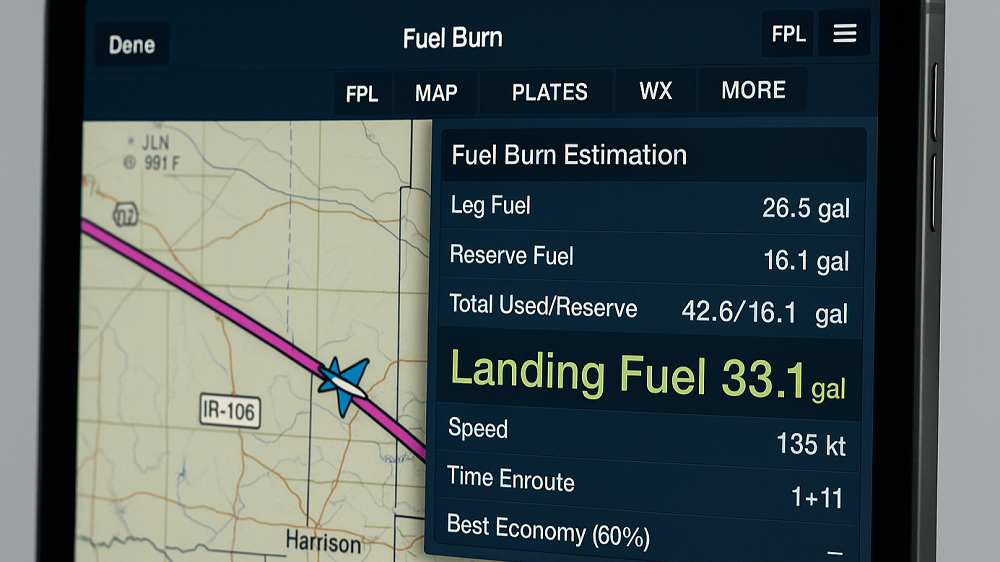Fuel planning is one of the most essential parts of flight preparation, and for new and aspiring private pilots, understanding the rules and applying good judgment can make a big difference in both safety and confidence. In this article, we will explore fuel planning basics, focusing on the legal minimum fuel requirements as outlined by the FAA, and how to create a solid real-world fuel strategy that goes beyond just meeting the minimum.
Understanding Legal Fuel Planning Minimums
The Federal Aviation Administration (FAA) has specific regulations about how much fuel you need to have onboard before takeoff. According to 14 CFR §91.151 for VFR (Visual Flight Rules) flight:
- Daytime VFR: You must have enough fuel to fly to your first point of intended landing and then fly for at least 30 minutes at normal cruising speed.
- Nighttime VFR: You must have enough fuel to fly to your first point of intended landing and then fly for at least 45 minutes at normal cruising speed.
These are the bare minimums required by law, but experienced pilots know that just meeting the minimum is not enough for safe and stress-free flying.
For IFR (Instrument Flight Rules) flights, the requirement under 14 CFR §91.167 is more complex. You must carry enough fuel to:
- Fly to the destination airport,
- Fly from there to the alternate airport (if required), and
- Fly after that for 45 minutes at normal cruising speed.
Why Legal Minimums Are Not Enough
Flying with the legal minimum fuel may be compliant, but it leaves no room for error. Weather, unexpected headwinds, delays in the traffic pattern, or diversions can all burn more fuel than anticipated. That’s why smart fuel planning includes a buffer, often called “reserves beyond reserves.”
Real-World Fuel Planning Strategy
Here are several steps and tips to help you develop a safe and effective fuel strategy for your flights.
1. Know Your Aircraft’s Fuel System
Start with your Pilot’s Operating Handbook (POH). Know:
- Total fuel capacity
- Usable vs unusable fuel
- Fuel burn rate at different power settings
- Fuel delivery system (gravity-fed or pump-fed)
For example, a Cessna 172 typically has 56 gallons of total fuel, with 53 usable. At a cruise power setting, it might burn around 8-10 gallons per hour.
2. Calculate Fuel Requirements Step-by-Step
Let’s walk through an example:
- You plan a daytime VFR flight of 2.5 hours.
- Your aircraft burns 8 GPH at cruise.
- Legal reserve: 30 minutes = 4 gallons.
Total Required Fuel = (2.5 hrs x 8 GPH) + 4 gallons = 24 + 4 = 28 gallons minimum
But this is still cutting it close. Many flight instructors recommend adding an additional 30-60 minutes of fuel as a practical reserve. That adds 4 to 8 more gallons.
3. Plan for Contingencies
Always assume something will go differently than planned. Build in fuel for:
- Delays in departure or arrival
- Diversions due to closed runways or weather
- Holding patterns if needed
- Strong headwinds that increase fuel burn
A good rule of thumb is the “1-hour rule”: plan to land with at least 1 hour of fuel remaining whenever possible.
4. Monitor In-Flight Fuel Usage
Don’t stop thinking about fuel once you’re in the air. Monitor:
- Time in flight vs estimated fuel consumption
- Fuel gauge readings (while acknowledging their limitations)
- Fuel burn rates based on engine settings
Use your time en route to verify your estimates. If you’re burning fuel faster than planned, consider a precautionary landing or rerouting.
5. Use Ground Tools and Apps
Modern tools make fuel planning easier. Apps like ForeFlight, Garmin Pilot, and others help you:
- Estimate fuel burn based on route, winds aloft, and aircraft profile
- Input reserves and alternate airports
- Adjust plans on the fly with real-time updates
Be sure to cross-check automated results with manual calculations, especially early in your training.
6. Know Where to Get Fuel
Not every airport has fuel available, and not all FBOs have the same operating hours. Before departing:
- Check fuel availability in your app or Airport/Facility Directory
- Call ahead to confirm hours and services
- Factor in time for refueling stops
Running low on fuel and discovering there is none available is a preventable problem.
7. Account for Weight and Balance
Fuel adds weight. Always factor fuel load into your weight and balance calculations. Remember:
- 1 gallon of Avgas weighs about 6 pounds
- Full tanks might limit passenger or baggage capacity
If needed, you can fly with partial fuel loads as long as it meets your trip and reserve needs.
8. Practice Makes Perfect
Fuel planning becomes second nature with experience. Practice:
- Estimating burn rates on different types of flights
- Using both POH data and real-world results
- Tracking performance on every flight
You’ll develop a gut feel for fuel needs and how your plane performs in varying conditions.
Tips from Instructors and Examiners
CFIs and DPEs often emphasize the importance of fuel management in both training and checkrides. Here are some common recommendations:
- Always brief your fuel plan before every flight
- Know your go/no-go point: When do you divert or land?
- Don’t rely on fuel gauges alone: Use time and burn rate
- Log actual fuel usage: It helps refine future planning
Common Mistakes to Avoid
New pilots often make the following errors:
- Overestimating fuel efficiency
- Forgetting to check for headwinds
- Assuming fuel is available without verifying
- Planning with legal minimums only
Avoid these pitfalls by staying conservative and thinking ahead.
Final Thoughts
Fuel planning is part science, part judgment, and part habit. By understanding the FAA’s minimum requirements and consistently planning with real-world margins, you’ll be better prepared for safe and stress-free flying. As you gain experience, fuel planning becomes a rhythm you build into every flight. When in doubt, always lean toward caution. No pilot has ever regretted landing with too much fuel.
Recent Posts
FAA MOSAIC Final Rule: What Pilots, Manufacturers, and the Aviation Community Need to Know
Learn how the FAA’s MOSAIC final rule revolutionizes Light-Sport Aircraft certification, expands Sport Pilot privileges, and reshapes general aviation. See what’s changing, when it takes effect,...
Student Pilot Insurance: Essential Coverage for Aspiring Flyers
Discover how student pilot insurance can protect your flying dreams. Get expert tips and coverage options to ensure your safety and peace of mind.


